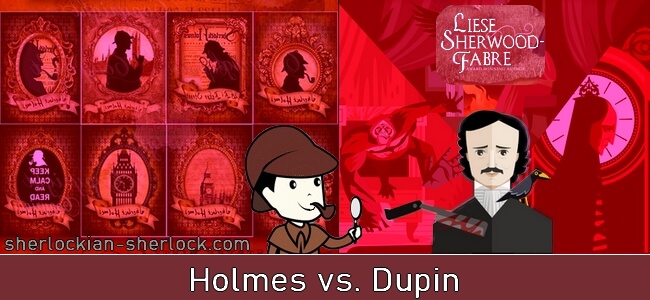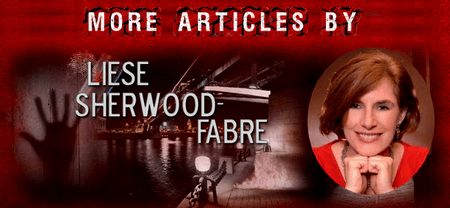HOLMES VS. DUPIN


Author: Liese Sherwood-Fabre, award-winning writer

In A Study in Scarlet, Watson compares Holmes to Dupin, Edgar Allen Poe’s Parisian detective. Holmes replies the comment is not the compliment it appears because Dupin was not the “analytical phenomenon” portrayed. Holmes’ opinion reflects Poe’s own after he wrote three stories, despite the detective being a groundbreaking character.
While known for his tales of the macabre, Poe had an analytical bent as well. Before he wrote of Dupin the detective, he penned a series of essays on cryptography and challenged readers to submit their ciphers for him to decode. Rosenheim argues that Dupin and his approach to solving crime reflected Poe’s efforts to apply similar logic to the field of criminal investigation. Police departments were still forming, and their methods were often brutal and not always effective. Dupin set the stories in Paris because they had an established police department as well as the Sûreté, for criminal investigation. (1)
The detective appears in three Poe stories: “The Murders in the Rue Morgue,” “The Purloined Letter,” and “The Mystery of Marie Roget.” He also has a companion, never named, who narrates the stories. (2) All three are considered tales of “ratiocination,” a term used by Poe to describe the process involved in solving the three crimes. The term relates to reason (or ratio), and computation. (3) This requires establishing relationships between unknown events and motives to solve complex problems through a combination of scientific reasoning and intuition. The focus is on deviations from the normal, anticipation of others’ actions, and information that, at first glance, is external to the case. (4)
Such reasoning is referred to as “abductive.” Compared to deductive or inductive reasoning, abductive reasoning includes the use of perception of what may appear random information or observations from a “leap of inference” that creates a pattern. This pattern becomes a “rule” which can be tested. (5) Through the newspaper and police accounts of the crime scene as well as his own visit to the murder victims’ apartment, Dupin makes an abductive conclusion. The strength and agility of the perpetrator, as well as an unusual tuft of hair, leads him to announce an orangutan killed the two women. An advertisement in a newspaper leads to the animal’s owner.
This use of reasoning reflects an increased interest in the application of the scientific method against superstitions and customs ordering life prior to the1800s. Fueled by social fears and anxieties, the public had a fascination with the macabre. Scientific advancements and reasoning could be applied to such concerns and provide a more rational explanation of events without relying on superstitions. When Poe wove the macabre and “ratiocination” into a mystery story, he created a new genre—Gothic detective fiction. (6)
Poe, however, abandoned his detective and the genre after the three stories. J.G. Kennedy argues that he recognized such tales as artificial because the writer had developed the mystery and the solution. He went so far as to mock the process in the next story he published, “The Oblong Box.” (7)
While Holmes followed much of the same techniques as Dupin, application of abductive reasoning to solve the cases presented to him—some with Gothic characteristics such as vampires—he saw through the pretense just as Poe did. When the author is in control of the mystery, it will follow the author’s logic in the end.
Resources:
1) Rosenheim, Shawn. “‘The King of `Secret Readers’’: Edgar Poe, Cryptography, and the Origins of the Detective Story.”
ELH 56, no. 2 (1989): 375–400. https://doi.org/10.2307/2873064.
2) https://www.britannica.com/topic/C-Auguste-Dupin
3) https://www.merriam-webster.com/dictionary/ratiocination
4) https://litchatte.com/2019/06/27/poe-responds-to-concerns-about-rising-crime-in-the-19th-century-and-creates-the-genre-of-detective-fiction/
5) Grimstad, Paul. “C. Auguste Dupin and Charles S. Peirce: An Abductive Affinity.” The Edgar Allan Poe Review 6, no. 2 (2005): 22–30.
6) Michelle Miranda “Reasoning through madness: the detective in Gothic crime fiction” Palgrave Communications 3, 17045 (2017).
7) J. Gerald Kennedy, “The Limits of Reason: Poe’s Deluded Detective” in American Literature, 47, No. 2 (May 1975): 184-96.

Thank you very much for this article Liese Sherwood-Fabre.

Recommended articles:

Read more:
Articles by Liese Sherwood-Fabre


|










